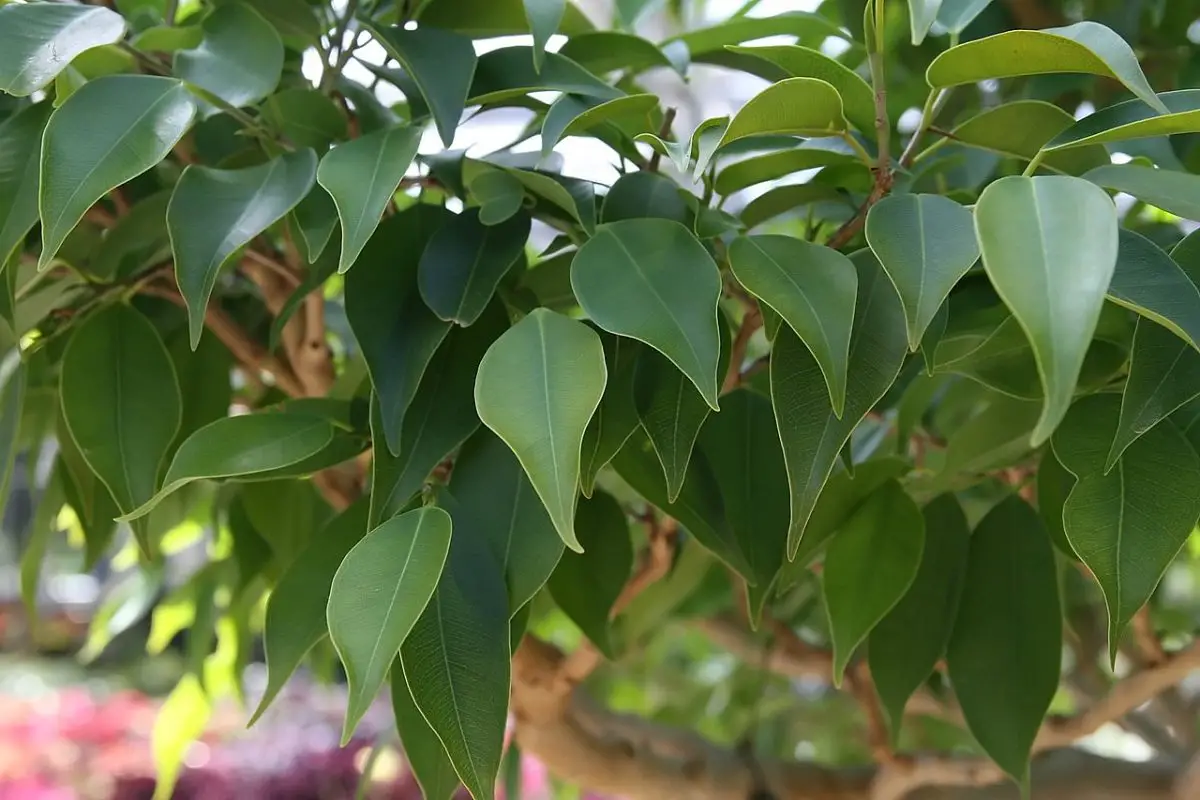
Small-leaved ficus // Image – Wikimedia / David J. Stang
One of the most common and easiest indoor plants to grow is the Benjamin fig tree. Its main advantage is having a thick crown of leaves, very decorative. Precisely for this reason, proper pruning allows the plant to rejuvenate and give it a better and tidy appearance. Despite the fact that the ficus does not require special care, stems need to be pruned periodically to keep them looking good and also to prevent it from reaching the ceiling as it grows.
The plant can benefit from proper pruning interventions. It must be said that these interventions are not always necessary, because in general all plants know how to guide their behavior and production. But sometimes the disorderly growth of some branches can cause a mismatch of the original symmetry of the tree. Therefore, it is important to know how to prune a Benjamin fig tree.
When to prune a Ficus benjamina
The pruning of the Benjamin fig tree should be done in the spring months: it is an operation designed to limit the development of the crown, order it and make it more balanced and harmonious. In the event that there are large branches, however, it is advisable to also proceed with a winter pruning, since in these months the milky substance that is emitted after cutting is present to a lesser extent.
Equally important is the coverage, which consists of the elimination of the newborn buds, and which is implemented to allow the plant to grow more compactly, developing a sufficiently dense crown. The roots develop very quickly when the plant is young, so it is necessary to check the root mass once a year. However, over time, interventions may be more sporadic. Pruning Ficus benjamina requires the use of proper tools and tools
Why prune it
Pruning a ficus benjamina is useful if you want to reduce the height of the treefor example, to be able to more easily reach the fruits. Secondly, to avoid diseases that can enter the wood through woundsSometimes it is essential to cut the dead wood, as well as the branches that are in contact with each other.
Pruning a damaged ficus is crucial, as it is for any tree, as can reinforce a foliage that is too extensive, correct a downed harbor or retain the advantage of thick foliage in some circumstances. Pruning, in fact, increases the vitality of the plant.
How to prune a Benjamin fig tree

Reiterating that pruning should not change the shape of the ficus but simply resize its foliage, it is necessary to start cutting the underlying branches, from the point where it joins the stem or branch. The interior of the plant should also be lightened to favor better lighting and adequate ventilation. With foliage that is too dense, in fact, the branches and leaves that are further inside run the risk of not receiving enough light, as well as not being sufficiently oxygenated.
For this reason, it is advisable to remove broken branches, diseased branches, branches with few leaves and those that are weak or excessively bent. As for the outer area of the cup, the terminal parts of the branches should be removed about eight inches. In the presence of bifurcations, it is enough to remove a single tip, to favor the development of the other and favor a more balanced and harmonious growth. Wasted, yellowed or dry portions, on the other hand, must be disposed of, in any case.
In summary:
- Locate the node where a leaf or twig joins the stem or branch.
- It should be cut with a slight downward slant before the knot.
- We will cut close to the knot without damaging it.
- We will leave at least one node for the new growth of that stem or branch.
- To remove a branch, we will cut it until just before the trunk / branch and without leaving any knots.
This should be done with the goal of creating a natural looking tree, but well cared for.
Pruning benefits
Sometimes it can be made to think that pruning is an unnecessary operation for the care of plants and that it has a purely aesthetic purpose. In fact, this factor is a consequence of the health benefits derived from the plant. In fact, eliminating dry, unproductive branches means allowing the Benjamin fig tree have enough nutrition to develop the youngest parts in the best possible way and favoring the substitution of the driest branches, which unnecessarily steal food from the plant, slowing down its development and growth and making these operations difficult for the natural ones.
Pruning is also important to prevent Ficus foliage from becoming too thick and consequently that part of the leaves and branches do not receive adequate lighting, which is also essential for the exuberant development of the plant. Similarly, pruning the internal leaves allows proper ventilation and prevents the formation of areas that are perpetually in the shade or subject to excessive humidity, which would damage the leaves and branches. Pruning the internal leaves allows proper ventilation and prevents the formation of areas that are perpetually in the shade or subject to excessive humiditywhich would damage the leaves and branches.
After pruning

After pruning a plant, it is necessary to organize proper care. Reduce watering, since after pruning the number of leaves is significantly reduced and the plant does not need as much moisture as before. Direct sunlight can burn young shoots that grow backThat is why you have to make sure that it does not get too much direct sun, especially in the hottest hours.
For the rest, a few months after pruning, you can gradually return to the usual care.
